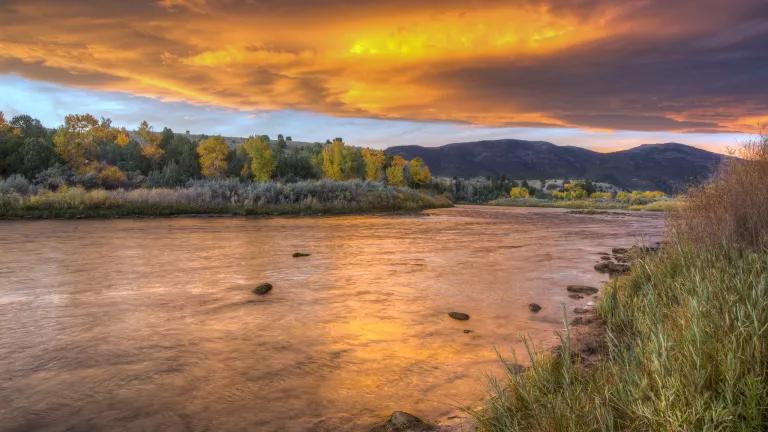
Embudo Creek, New Mexico
With drought ravaging 94% of the West, Governor Lujan Grisham’s commitment to conserve 30% of state lands by 2030 is a welcome and urgently-needed strategy. As we recently explained, Governor Lujan Grisham’s “30 by 30” executive order recognizes that conserving the state’s freshwater resources is imperative. In implementing its 30 by 30 initiative, New Mexico has an opportunity—and a responsibility—to pioneer a new framework for freshwater conservation.
Freshwater ecosystems support New Mexico’s multi-billion dollar outdoor recreation economy, sequester tons of carbon, and sustain unique biodiversity hotspots. But drought and development threaten these fragile ecosystems. To provide a high level overview of the importance of freshwater protection in New Mexico, NRDC analyzed the distribution of streams, rivers, and wetlands across different land types (e.g., permanently protected lands, federally administered lands, private lands) throughout the state, and found that only approximately 10% of these ecosystems are currently located on protected land. Specifically, we found that only 9.20% of stream and river miles and 11.57% of wetland acres are located within existing protected areas. While New Mexico may ultimately use different criteria to identify and protect freshwater resources, there is clearly much work to do to achieve 30% protection of these important ecosystems.

Distribution of NHD streams and rivers (blue) on existing protected lands in New Mexico
To conduct this analysis, we used the National Hydrography Dataset (NHD) to map intermittent, perennial, and ephemeral streams and rivers, and relied on the National Land Cover Database (NLCD) for information about woody wetlands and emergent herbaceous wetlands. We also defined “protected areas” as lands primarily managed for biodiversity, according to the U.S. Geological Survey’s Protected Areas Database of the United States (PAD-US).
While there is no single path to protect 30% of lands and waters by 2030, an arid state like New Mexico must focus on freshwater ecosystems to ensure that future generations can enjoy the environmental, economic, cultural, and health benefits of freshwater that many of us take for granted. Governor Lujan Grisham’s 30 by 30 executive order recognizes the need for heightened efforts to protect surface and ground water quality, preserve landscapes that can enhance water supplies and support healthy watersheds, and increase access to protected lands and watersheds for underserved communities. Decisionmakers must weigh the distribution of aquatic resources with several other important factors, including restoring and protecting natural areas near communities of color and lower-income communities, engaging Tribes, and incorporating Indigenous knowledge. However, by setting explicit goals and working towards integrated terrestrial and aquatic solutions, New Mexico can not only protect vital freshwater resources, but they can model successful freshwater conservation for the rest of the nation.



